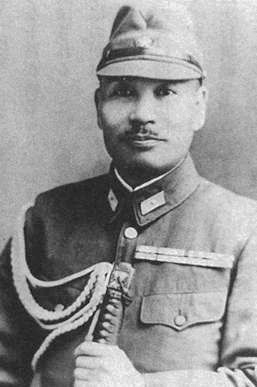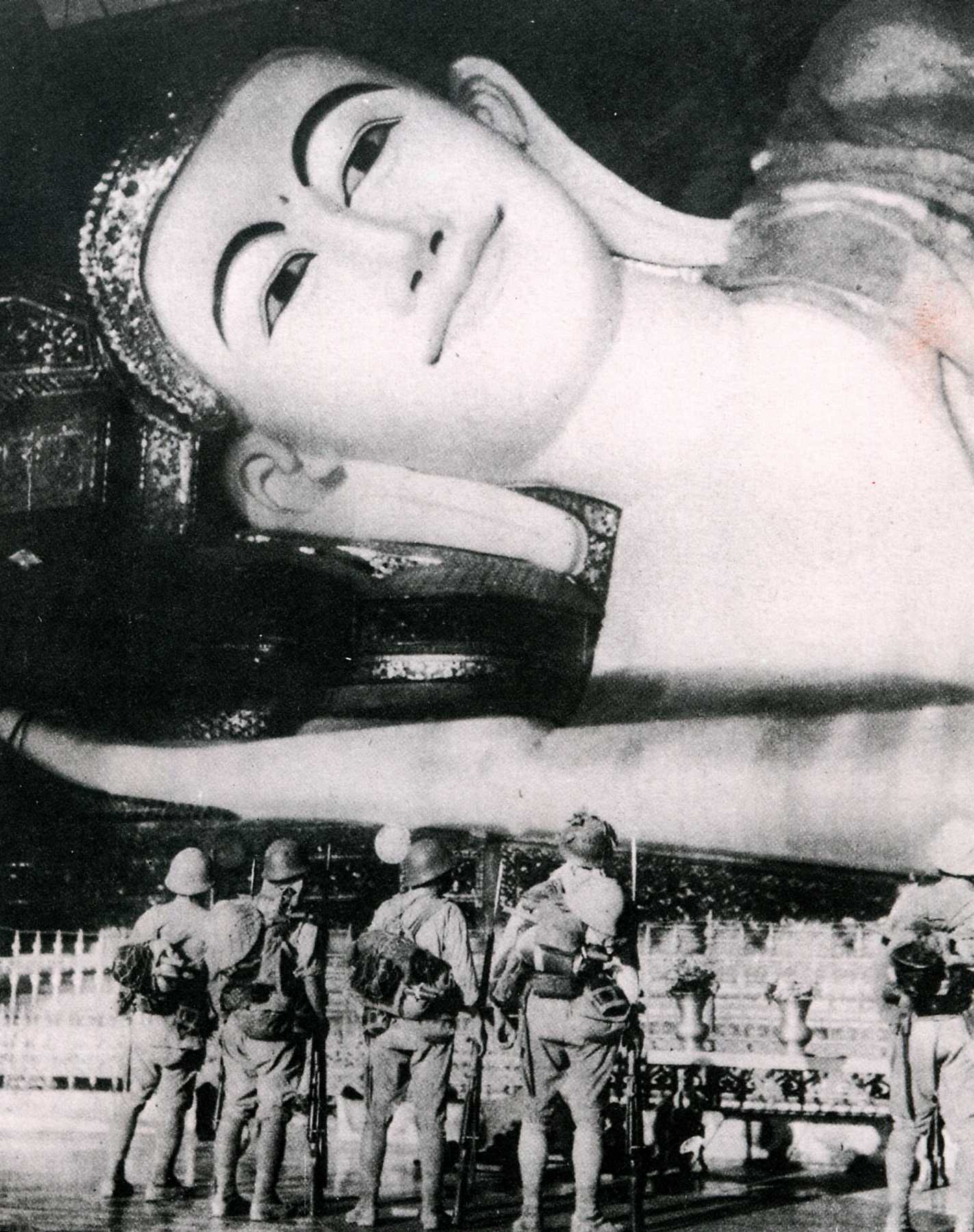|
State Of Burma
The State of Burma (; , ''Biruma-koku'') was a Japanese puppet state established in 1943 during the Japanese occupation of Burma in World War II. Background During the early stages of World War II, the Empire of Japan invaded British Burma primarily to obtain raw materials (which included oil from fields around Yenangyaung, minerals and large surpluses of rice), and to close off the Burma Road, which was a primary link for aid and munitions to the Chinese Nationalist forces of Chiang Kai-shek which had been fighting the Japanese for several years in the Second Sino-Japanese War. The Japanese Fifteenth Army under Lieutenant General Shojiro Iida quickly overran Burma from January – May 1942. The Japanese had also assisted the formation of the Burma Independence Army (BIA), which aided the Japanese during their invasion. The BIA formed a provisional government in some areas of the country in the spring of 1942, but there were differences within the Japanese leadership ... [...More Info...] [...Related Items...] OR: [Wikipedia] [Google] [Baidu] |
Puppet State
A puppet state, puppet régime, puppet government or dummy government is a State (polity), state that is ''de jure'' independent but ''de facto'' completely dependent upon an outside Power (international relations), power and subject to its orders.Compare: Puppet states have nominal Sovereign state, sovereignty, except that a foreign power effectively exercises control through economic or military support. By leaving a local government in existence the outside power evades all responsibility, while at the same time successfully paralysing the local government they tolerate. Puppet states differ from Alliance, allies, who choose their actions of their own initiative or in accordance with Treaty, treaties they have voluntarily entered. Puppet states are forced into Rubber stamp (politics), legally endorsing actions already taken by a foreign power. Characteristics Puppet states are "endowed with the outward symbols of authority", such as a name, National flag, flag, anthem, cons ... [...More Info...] [...Related Items...] OR: [Wikipedia] [Google] [Baidu] |
Ba Maw
Ba Maw (, ; 8 February 1893 – 29 May 1977), known honorifically as Dr. Ba Maw, was a Burmese lawyer and politician, active during the interwar period and Second World War. He was the first Burma Premier (1937–1939) and head of State of Burma from 1943 to 1945. Early life and education Ba Maw was born in Maubin. He came from a distinguished family of mixed Mon-Bamar parentage. His father, Shwe Kye was an ethnic Mon from Amherst (now Kyaikkhami) and well-versed in French and English languages. Thus Shwe Kye served as a royal diplomat who accompanied Kinwun Mingyi U Kaung in the Burmese diplomatic missions to Europe in the 1870s, and worked as an assistant tutor to Royal tutor Dr. Mark at the last royal palace of the last Burmese monarchy. Ba Maw's elder brother, Professor Dr Ba Han (1890–1969), was a lawyer as well as a lexicographer and legal scholar, and served as Attorney General of Burma from 1957– 1958. He was brought up as a Christian and later converted t ... [...More Info...] [...Related Items...] OR: [Wikipedia] [Google] [Baidu] |
Burma National Army
The Burma Independence Army (BIA), was a pro-Japanese and revolutionary army that fought for the end of British rule in Burma by assisting the Japanese in their conquest of the country in 1942 during World War II. It was the first post-colonial army in Burmese history. The BIA was formed from a group known as the Thirty Comrades under the auspices of the Imperial Japanese Army after training the Burmese nationalists in 1941. The BIA's attempts at establishing a government during the invasion led to it being dissolved by the Japanese and the smaller Burma Defence Army (BDA) formed in its place. As Japan guided Burma towards nominal independence, the BDA was expanded into the Burma National Army (BNA) of the State of Burma, a puppet state under Ba Maw, in 1943.Donald M. Seekins, ''Historical Dictionary of Burma (Myanmar)'' (Scarecrow Press, 2006), 123–26 and 354. After secret contact with the British during 1944, on 27 March 1945, the BNA revolted against the Japanese. Th ... [...More Info...] [...Related Items...] OR: [Wikipedia] [Google] [Baidu] |
Fifteenth Army (Japan)
The was an army of the Imperial Japanese Army The Imperial Japanese Army (IJA; , ''Dai-Nippon Teikoku Rikugun'', "Army of the Greater Japanese Empire") was the principal ground force of the Empire of Japan from 1871 to 1945. It played a central role in Japan’s rapid modernization during th ... during World War II. It was involved in the Japanese conquest of Burma, invasion of Burma in December 1941 and served in that country for most of its war service. History The Japanese 15th Army was formed on November 9, 1941, as a component of the Southern Expeditionary Army Group for the specific task of Japanese conquest of Burma, invading the British colony of Burma. To do this the army, then based in Indo-China, needed to transit through Thailand. On December 8, 1941, the 33rd and 55th Divisions of the army spearheaded by the Imperial Guard Japanese invasion of Thailand, invaded Thailand overland from what is now Cambodia. The invasion was supported by landings on the coast to the ... [...More Info...] [...Related Items...] OR: [Wikipedia] [Google] [Baidu] |
Second Sino-Japanese War
The Second Sino-Japanese War was fought between the Republic of China (1912–1949), Republic of China and the Empire of Japan between 1937 and 1945, following a period of war localized to Manchuria that started in 1931. It is considered part of World War II, and often regarded as the beginning of World WarII in Asia. It was the largest Asian war in the 20th century and has been described as The Asian Holocaust, in reference to the scale of Japanese war crimes against Chinese civilians. It is known in China as the War of Resistance against Japanese Aggression. On 18 September 1931, the Japanese staged the Mukden incident, a false flag event fabricated to justify their Japanese invasion of Manchuria, invasion of Manchuria and establishment of the puppet state of Manchukuo. This is sometimes marked as the beginning of the war. From 1931 to 1937, China and Japan engaged in skirmishes, including January 28 incident, in Shanghai and in Northern China. Chinese Nationalist and C ... [...More Info...] [...Related Items...] OR: [Wikipedia] [Google] [Baidu] |
Kuomintang
The Kuomintang (KMT) is a major political party in the Republic of China (Taiwan). It was the one party state, sole ruling party of the country Republic of China (1912-1949), during its rule from 1927 to 1949 in Mainland China until Retreat of the government of the Republic of China to Taiwan, its relocation to Taiwan, and in Taiwan Martial law in Taiwan, ruled under martial law until 1987. The KMT is a Centre-right politics, centre-right to Right-wing politics, right-wing party and the largest in the Pan-Blue Coalition, one of the two main political groups in Taiwan. Its primary rival is the Democratic Progressive Party (DPP), the largest party in the Pan-Green Coalition. As of 2025, the KMT is the largest single party in the Legislative Yuan and is chaired by Eric Chu. The party was founded by Sun Yat-sen in 1894 in Honolulu, Hawaii, as the Revive China Society. He reformed the party in 1919 in the Shanghai French Concession under its current name. From 1926 to 1928, the K ... [...More Info...] [...Related Items...] OR: [Wikipedia] [Google] [Baidu] |
Burma Road
The Burma Road () was a road linking Burma (now known as Myanmar) with southwest China. Its terminals were Lashio, Burma, in the south and Kunming, China, the capital of Yunnan province in the north. It was built in 1937–1938 while Burma was a British colony to convey supplies to China during the Second Sino-Japanese War. Preventing the flow of supplies on the road helped motivate the occupation of Burma by the Empire of Japan in 1942 during World War II. Use of the road was restored to the Allies in 1945 after the completion of the Ledo Road. Some parts of the old road are still visible today. History The road is long and runs through rough mountain country. The sections from Kunming to the Burmese border were built by 200,000 Burmese and Chinese laborers during the Second Sino-Japanese War in 1937 and completed by 1938 in order to circumvent the Japanese blockade of China. The construction project was coordinated by Chih-Ping Chen. During World War II, the Al ... [...More Info...] [...Related Items...] OR: [Wikipedia] [Google] [Baidu] |
Yenangyaung
Yenangyaung (; literally "stream of oil") is a city in the Magway Region of central Myanmar, located on the Irrawaddy River and 363 miles from Yangon. Until 1974, it remained the capital city of both Minbu Division (now Magway Division) and Yenangyaung District. The population of Yenanchaung was 45,120 according to the 2014 census, but it reached 49,938 in September 2020. This makes it the fourth-largest city in the Magway Region, after Pakokku, Magway and Aunglan. General Aung San received his secondary education in this city. Education and geography Education Yenangyaung is home to Yenangyaung University and Yenangyaung Government Technical Institute, as well as No.(1) Basic Education High School, which turned 100 years old in January 2015. Geography Yenangyaung is located along the Irrawaddy River, and is divided into 14 main quarters, namely: * Thit-ta Bwe * Ywarthit * Obo * Nyaung Hla * Myoma (South) * Myoma (North) * Sonetite * Shwe Kyar-nyone * Myaynikhin (S ... [...More Info...] [...Related Items...] OR: [Wikipedia] [Google] [Baidu] |
World War II
World War II or the Second World War (1 September 1939 – 2 September 1945) was a World war, global conflict between two coalitions: the Allies of World War II, Allies and the Axis powers. World War II by country, Nearly all of the world's countries participated, with many nations mobilising all resources in pursuit of total war. Tanks in World War II, Tanks and Air warfare of World War II, aircraft played major roles, enabling the strategic bombing of cities and delivery of the Atomic bombings of Hiroshima and Nagasaki, first and only nuclear weapons ever used in war. World War II is the List of wars by death toll, deadliest conflict in history, causing World War II casualties, the death of 70 to 85 million people, more than half of whom were civilians. Millions died in genocides, including the Holocaust, and by massacres, starvation, and disease. After the Allied victory, Allied-occupied Germany, Germany, Allied-occupied Austria, Austria, Occupation of Japan, Japan, a ... [...More Info...] [...Related Items...] OR: [Wikipedia] [Google] [Baidu] |
Japanese Occupation Of Burma
The Japanese occupation of Burma was the period between 1942 and 1945 during World War II, when Burma was occupied by the Empire of Japan. The Japanese had assisted formation of the Burma Independence Army, and trained the Thirty Comrades, who were the founders of the modern Armed Forces (''Tatmadaw''). The Burmese hoped to gain support of the Japanese in expelling the British, so that Burma could become independent.Micheal Clodfelter. Warfare and Armed Conflicts: A Statistical Reference to Casualty and Other Figures, 1500–2000. 2nd Ed. 2002 . p. 556Werner Gruhl, Imperial Japan's World War Two, 1931–1945 Transaction 2007 (Werner Gruhl is former chief of NASA's Cost and Economic Analysis Branch with a lifetime interest in the study of the First and Second World Wars.) In 1942, Japan invaded Burma and, on 1 August 1943, nominally declared the colony independent as the '' State of Burma''. A pro-Japanese government led by Ba Maw was installed. However, many Burmese began ... [...More Info...] [...Related Items...] OR: [Wikipedia] [Google] [Baidu] |







